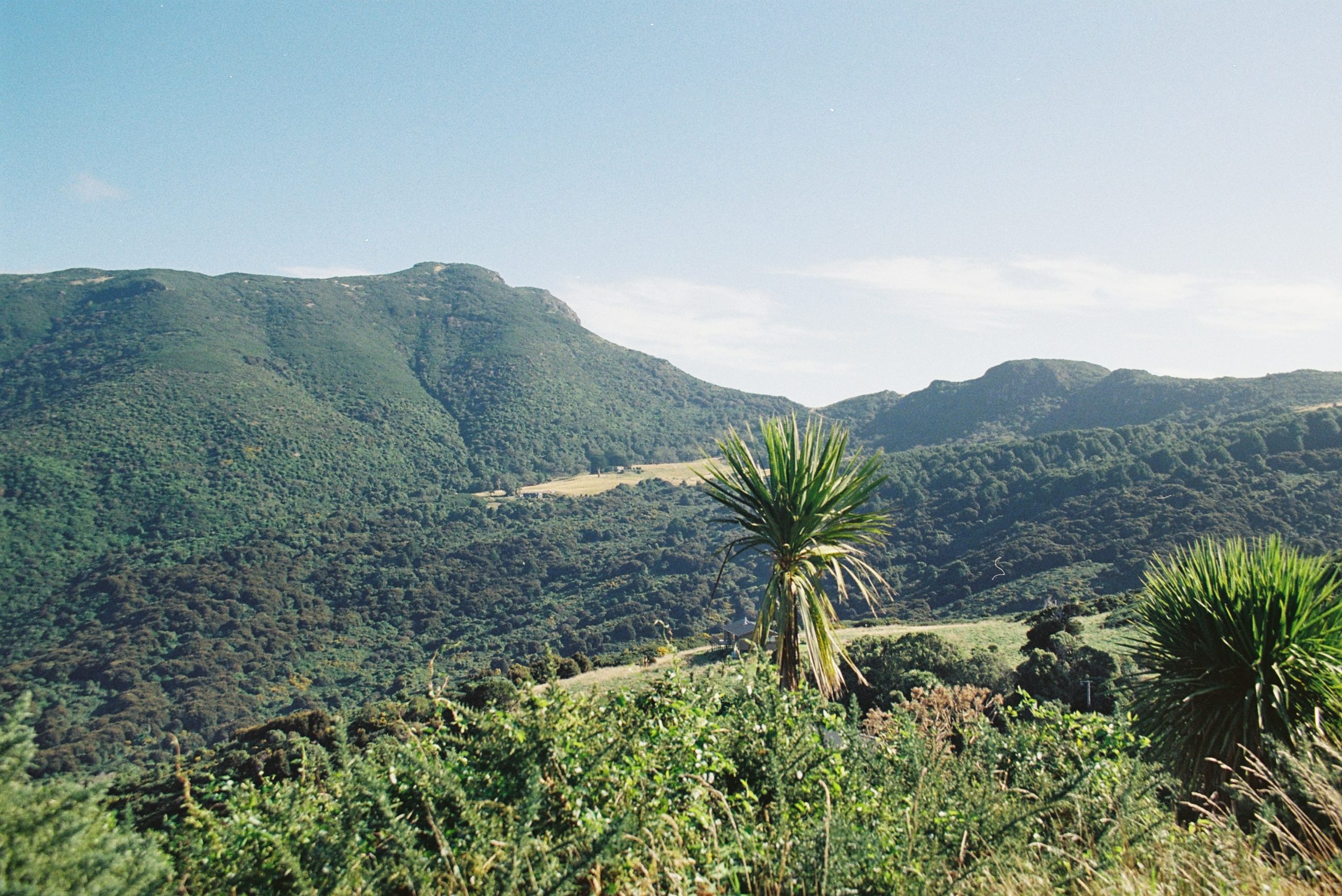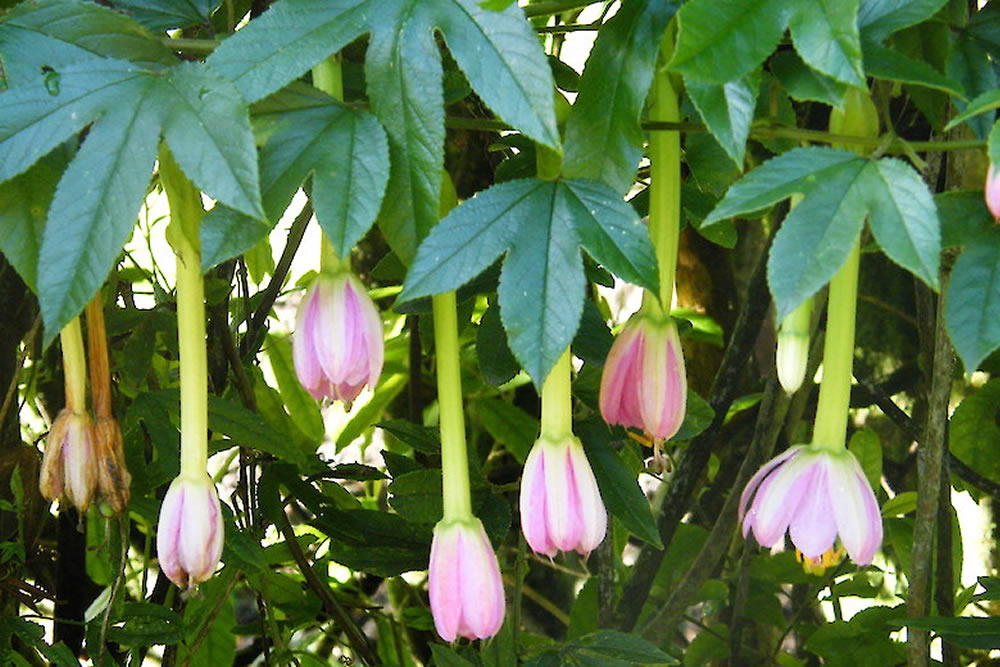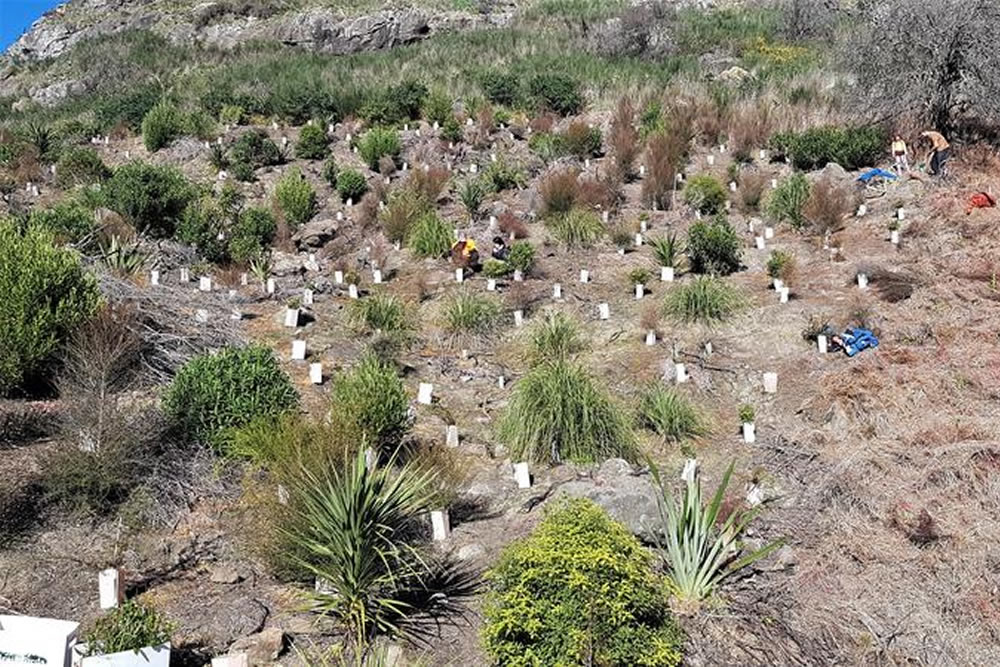
Replant Natives
Prior to the impact of people, Banks Peninsula was dominated by species-rich indigenous forest, the exceptions to this being areas of steep, exposed rocky ground and wetlands. The specifics of this predominantly podocarp/hardwood forest have been well documented by Hugh Wilson and the following is a summary from one of his detailed papers on the subject.
The tallest, grandest forest occupied the valley floors. This was dense podocarp forest with kahikatea as the principal species. Similar species dominated the lower slopes; however, lowland totara and matai were more common than kahikatea. On the upper slopes totara, broadleaf and other shrubby hardwoods and tree ferns occurred.
Near the coast, warmth-demanding species such as ngaio, nikau palm, akeake, titoki, native passion vine and shining broadleaf were common. On the highest bluffs the shrubland and scrub of non-forest montane species, including snow tussock, fescue tussock, Dracophyllum and mountain flax, predominated.
Wilson notes that probably as much as three quarters of the area was still under old growth forest when the Europeans arrived to settle, the other quarter having been fired and cleared by Maori as part of their traditional cultivation practices.
Why we’re doing this?
Flora, or plants, are the basis for all invertebrate and animal life. Quite simply, if there isn’t a diverse range of plants to support the varying needs of birds, lizards and everything else; they won’t return. No food, no nesting sites, no rich environment. As we know, Banks Peninsula had a rich and diverse forest. Forest remnants aside, pasture and regenerating manuka make up a vast proportion of the current landscape. Left to it’s own rewilding, nature will take it’s course. But, we may choose to give nature a helping hand by reintroducing some of the original flora to help expedite the process!
What can you do?
Step 1: Remove browsers and gazers
- Fencing areas off, be they waterways or maybe valleys that are too hard to graze are an essential first step.
- A good fence allows understorey plants to regenerate in forest fragments without the pressure of feeding stock
Step 2: Control other pests and weeds
- New plantings have several competitors, namely weeds, and pests. New plantings need 3 – 5 years of reduced competition before they get established. This may mean chemical suppression is required in the short term.
- Pests also can impact new plantings, specifically possums and hares. A pest management programme and/or guards to protect young trees are important.
Step 3: Manage the edges and adjacent habitats
- Forest edges, which are ‘artificial’ when we have only remnant patches, are physically and biologically different from forest interiors. Trees on edges can die from the effects of wind and differing moisture needs. In such cases transitional vegetation might be needed to provide a windbreak and/or retain water.
What you could plant?
Ideally bush areas will regenerate naturally from falling seeds, or those carried in by wind or birds. But sometimes nature may need a helping hand. With minimum effort and money, you can grow a range of easy-care native plants from seed.
Some native plant varieties are called ‘primary species’. Examples are manuka, kanuka and ti kouka/cabbage trees. They like starting out on bare ground, and are hardy, easy to grow and will generally tolerate extremes in temperature, terrain, soil type and drainage.
In many cases, planting even a few primary species can encourage birds to bring in the seed of a wider variety of plants, saving you the time and expense of growing them yourself.
We’ve compiled a planting guide however, of trees that typically occur on Banks Peninsula, then and now. Like us, you may choose to give nature a kick start by planting some of those primary species, or you may choose to also replant some of the podocarps – the Kahikitea, Totara, Miro, or Matai that one used to dominate the landscape and provide a rich haven for the birds.
reducing Weeds

Invasive weeds smother native forest, bush or the ground and prevent native seedlings from regenerating. Removing weeds gives our native vegetation a chance to return to its natural state and provide a home for bird and insects.
removing Pests

The impact of introduced predators has had a devastating impact on many native species, with a massive decline in numbers or, sadly, extinction. Removing pests is the #1 way to help revive our native birds, insects and invertebrates.
replanting Natives

Banks Peninsula was covered in a rich and diverse forest that supported an abundant bird and animal population. Regeneration of their “home” is an important step in helping these populations return.
Let’s work together to help reWild Wainui!
Join our community initiative to reduce Weeds, remove Pests and replant Natives.